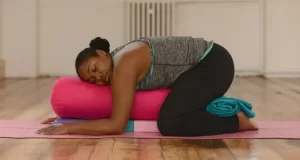A lot of amateur or even experienced athletes often turn up late in sports activities. As a result, they join running, swimming or riding too fast without a warm-up. Some others are too rushed to spend a couple of minutes on warming up. For those people, if they continue to underestimate the importance of warming up, they will end up missing various benefits.
This article will discuss the necessary of a warm-up. We will also mention about a good warm-up for you.
The 2 key purposes of warming up activity are to improve performance and avoid injury.
Also Read
Improved Performance
Accordingly, a warm-up is both mental and physical. Our advice is being relaxed, sitting in your chair and reading this column creates a moderately low 15 % to 20% of blood flow to your bone muscles. Most of the small blood capillaries within those muscles are locked. After 10 to 15 minutes of entire body exercise, blood flow to the bone muscles rises to about 70% to 75% and the capillaries open.
Together with further blood flow comes a growth in muscle temperature. This is decent as the hemoglobin in your blood release oxygen more freely at an upper temperature. More blood running to the muscles, together with more oxygen accessible to the working muscles, means improved exercise.
A growth in temperature also pays a regular contribution to quicker muscle contraction. Nerve transmission and muscle metabolism is enlarged, thus, the muscles work more competently.
Injury Avoidance
The linking of warming up and injury avoidance is hard to control. In a recent research, a small number of athletes go through a muscle stress check to see what it takes to tear a muscle.
This study is in line with the anecdotal data that acute muscle tears happen more frequently when the muscles are cold or not warmed up. The unusual changes were not connected to age or fitness level.
To inspect the advantage of a warm-up, 22 of the men with unusual outcomes did a jog-in-place at an adequate intensity for 2 minutes before doing an additional test of high-intensity running. With that slight two-minute warm-up, 10 of the men displayed usual ECG tracings and 10 displayed enhanced tracings. Only two of the subjects still displayed noteworthy irregularities.
It is not sure if a more comprehensive warm-up of 10 to 20 minutes might have made more enhancements. It would have been exciting to see the outcomes in case the scientists would have taken the research more steps.
Mental Preparation
A part of a warm-up procedure comprises getting ready for the forthcoming activity. Mentally preparing for the forthcoming exercises is supposed to increase skill, coordination and technique.
This mental warm-up also prepares sports persons for the anxiety of hard breaks or a competition. If their mind is ready to withstand anxiety, the body can produce greater speeds. If their mind is reluctant to withstand anxiety, physical performance will definitely be incomplete.
How much should you warm up?
There is no clear evidence about how much warm-up is desired before a workout or a competition. Our advice is warming up in the 10- to 20-minute range. However, several athletes need more time.
Furthermore, athletes with high levels of fitness normally require lengthier warm-up time before doing high-intensity exercises. Athletes with lower levels of fitness typically need a shorter warm-up period. Though, athletes with low fitness levels have a tendency to produce lower speeds during playing sports
Athletes with inactive speed and presently low fitness levels need to be chiefly careful with exercises to reduce injury threat. This means if you were fast before, but you are now not anymore, be patient with building your speed and fitness.
A common advice for warming up is to start with low-intensity running, cycling, swimming. Slowly grow intensity when you develop through the warm-up time. You can also comprise short segments of slowly growing intensity in the 30- to 60-second range.
Therefore, to perform at your best and decrease the risk of injury, always spend time warming up in a suitable period.














